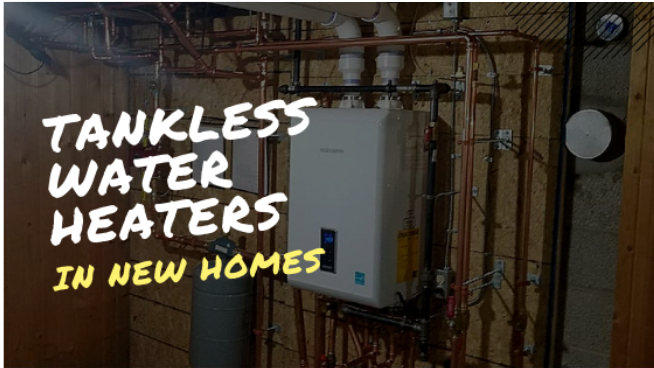The old-style hot water heater – a large tank that is constantly heated within so you get instant hot water when you need it – is one of the least energy-efficient appliances in the home. Why is this? No matter how well-insulated the tank is, heat will always escape. Heat is energy, and in wasting energy, you’re losing money all the time.
This is why new homes are built with tankless water heaters in place. These devices work by heating water in an instant – cold water from the source – when it is needed. The latest versions are highly efficient, far more compact than the old version, and come in a wide range of types.
What do you look for in a tankless water heater? There are many factors to consider, including power source, capacity and temperature. Let’s talk about these very neat devices in more detail, and help you find one that is best for you.
Types of Tankless Water Heaters
There are different types of tankless heaters. To begin, you can choose between gas and electric power. Which is the best? This depends on a variety of factors.
The main detail to consider initially is the GPM rating. This stands for ‘Gallons Per Minute’. It is a measure of how much water each appliance in the house uses over one minute. Every tankless water heater comes with a GPM rating, which is the amount of water that it can heat in that given time.
This raises a vital point: the more appliances you have in use at once, the higher GPM you need from your tankless heater! In general, gas heaters are more powerful, so if you have a larger property this is the type you might need. Here’s a few pointers as to the GPM rating that will be sufficient for a typical type of home:
Apartment or condo that’s less than 1000 square feet – 4.0GPM
Average two-bathroom house – 7.5 to 8.5GPM
Larger three-bathroom house – at least 9.0GPM
Bear in mind that the above are suggestions and will not apply to every home. As a guide, and to help you get a more accurate estimate of your required GPM, here is a list of some appliances, and how much their own GPM rating is:
Faucet – 0.5GPM
Dishwasher – 1.0GPM
Clothes washer – 1.5GPM
Shower – 2.5GPM
As long as all the appliances running at the same time do not exceed the GPM rating of the tankless heater, things should be fine!
Which Is Best For You?
This is not a question that can be answered in an instant, as there are further influential factors that will come into play. For example, the temperature of the source of water will vary according to where you are in the USA, and quite considerably in some cases. Each heater will also have a Temperature Rise Capability – this determines how much it can heat the water – so you need to think about that, too. If you want more detail, you can check out the best tankless water heaters here.
Also, you might want to look into Point of Use tankless heaters. These are smaller units that are sometimes installed to deal with a single appliance – perhaps a shower – and are generally electric. These are very useful in homes that do not have a gas supply.
To sum up, take this into account: a tankless heater is not only more compact than the traditional types, but it can save you as much as 60% on your energy costs, will last many more years, and will give you instant hot water every time.
Find a Home-Based Business to Start-Up >>> Hundreds of Business Listings.
















































